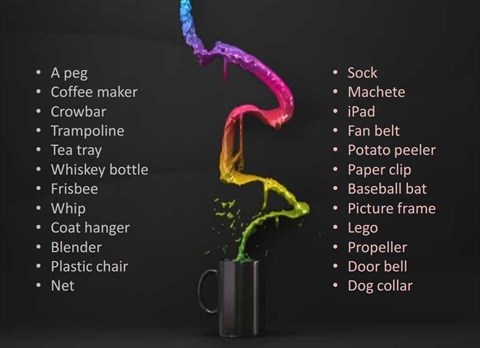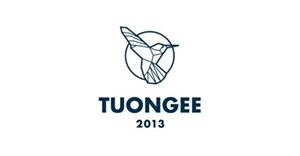
Subscribe & Follow
Jobs
- E-commerce Manager Johannesburg
- CRM Specialist Sandton
- Production Administrator Cape Town
- Creative Intern Houghton Estate
- Coordinator - Marketing and Events Johannesburg
- Brand Promoter Paarl
- PPC Specialist / Google Ads Specialist Johannesburg
- Creative Director Cape Town
- Channel Marketing Specialist Pretoria
- Group Digital Marketing Manager Cape Town
[Habari #Tuongee2014] The creative adult is the child who survived
He asked everyone in the room what their creativity quotient was and delegates responded with red/green cards, rating themselves from 0-10 (10 being a creative genius). He wanted to prove that we are all the same - we are actually all 10s.
The most creative people
![[Habari #Tuongee2014] The creative adult is the child who survived](https://biz-file.com/c/1407/214511.jpg)
Many, if not most of us often feel like we've "lost our creativity". There always seems to be someone better, more skilled or more creative out there. In truth, the most creative people on the planet today are actually kids. Anything is possible in the mind of a kid. It's playful and it's colourful.
What on earth happened to us? We were all kids at one stage but somewhere along the line we didn't "lose our creativity" per se, we simply lost the path to the creative space in our minds.
And then you are placed in a box...
![[Habari #Tuongee2014] The creative adult is the child who survived](https://biz-file.com/c/1407/214546.jpg)
Many people blame formal education, which is probably a fair argument. As soon as we go to school, we are given a uniform, we are told which subjects to take, and how the rest of our educational path will look. At the end of it all we are placed in different boxes - either you are a "creative person" or you're a "suit person", or whatever the case may be. In one way or another you are defined by the people around you.
John explained to delegates that the whole right-brain/left-brain theory is scientifically wrong. Engineers, scientists and even mathematicians use a lot of creativity to solve problems - they don't just use their left brains. To solve problems we use the creative side of our brains as well as the logic.
What happened in terms of our thinking frameworks? As a child, says John, you have an expansionist framework, anything goes. Kids are then told what to do and how to do it by parents, teachers etc. Thus, through the traditional education system we have learnt how to become reductionists. Not to say that there is anything wrong with being reductionists, but through having been stuck in reductionist frameworks for so many years, we've simply forgotten how to get from being reductionists to being expansionists. The result being that when we need to creatively solve problems we really struggle.
![[Habari #Tuongee2014] The creative adult is the child who survived](https://biz-file.com/c/1407/214551.jpg)
Creativity is a habit
Creativity is the habit of continually doing things in new ways to make a positive difference to our working lives. It's a habit. You're not born with it, so stop being scared of it. The people who are confident about their creativity are people who are continually practising their creative habits like playing a musical instrument, writing or cooking.
According to John, we're not designing our work spaces or brainstorming sessions in a way that allows that habit of creativity to continuously happen. We need to surround ourselves with these habits of creativity. We need to recognise that creativity is all around us.
![[Habari #Tuongee2014] The creative adult is the child who survived](https://biz-file.com/c/1407/214542.jpg)
What is innovation?
Creativity is thinking of new things, innovation is doing new things. Innovations aren't always product-focused. We do have product innovation, but we also have process innovation, service innovation, and cultural innovation.
Explaining cultural innovation, he referred to Google's 20% time on Fridays where employees don't do their usual day-to-day jobs, but rather what they are passionate about. To illustrate the value of this, out of 20% time came the likes of Google Maps, Gmail, AdWords and AdSense. All of these innovations that came out of 20% "let's play time" are accounting for over 60% of Google's revenue.
It's not that the most creative companies like Google and Apple have more or better creative people, but what most of us lack are two things: a lack of framework in our companies and a lack of process. It sounds strange that innovation needs a framework and a process...
Frameworks
There are five innovation frameworks that we don't get right, says John. Due to limited time he only explained two: space and signals.
Importance of space
![[Habari #Tuongee2014] The creative adult is the child who survived](https://biz-file.com/c/1407/214537.jpg)
He used the example of a greenhouse. Greenhouses are absolutely designed to make sure those tiny little shoots grow, and continue to grow.
With this concept in mind, he practically illustrated what happens when people get together in a room to brainstorm for ideas. As soon as an idea gets shot down, or not even shot down, just logically and practically thought about too much, it has an effect on the entire atmosphere and brainstorming session.
"We have been trained to tell each other why an idea isn't going to work. We've been trained to cut off the little shoot as soon as it starts to sprout. That influences everyone else in the room who are now too scared to give their ideas."
The aim of a brainstorming session must be to get to someone's 50th idea - not their first one. And if the first idea gets killed, you will never get to that brilliant 50th idea. Instead, keep the ideas going in a positive way. That's what space is about.
Physical space where creativity and innovation needs to happen is also extremely important. Take for example Google's offices which is, in essence, a "greenhouse". Google's employees don't just go into a boardroom which is where they need to now "get creative" - their whole office is their greenhouse. They live in their greenhouse and constantly have the opportunity to be creative. While they are doing their day-to-day jobs, they are living in a greenhouse where their ideas get nurtured and are given the opportunity to grow.
![[Habari #Tuongee2014] The creative adult is the child who survived](https://biz-file.com/c/1407/214535.jpg)
![[Habari #Tuongee2014] The creative adult is the child who survived](https://biz-file.com/c/1407/214533.jpg)
Any idea is possible, any idea goes. Another key thing in Google's offices is that it allows everybody to catch their ideas on idea-catching boards all over the place. There are post-it notes everywhere. If an idea happens, grab and capture it immediately!
The importance of signals
When you walk into a boardroom, the signals are shouting at you saying "this is a boardroom" aka "this is a corporate area". It's very hard to be creative in a boardroom, because the signalling is telling you everything but "come up with new ideas". John advises to either change the environment or go somewhere else.
![[Habari #Tuongee2014] The creative adult is the child who survived](https://biz-file.com/c/1407/214531.jpg)
In his own brainstorming and creative sessions, John uses a system of red and yellow cards. He says that he frames it upfront to participants entering the session saying: "We are now in the greenhouse so any idea goes. If you criticise an idea, you get a yellow card, if you do it twice, you get a red card and you need to leave the room." He says that this changes the whole dynamic of the conversation and people are actually scared to criticise ideas.
The aim of your brainstorming sessions shouldn't be to decide whether they are good or bad or fantastic ideas - that comes later. The point of the session is that, instead of getting three lame ideas, you get 100 that you can potentially work with. That's what signals are all about.
John truly believes the Thinking Hats of Edward de Bono work.
He advises to have people in the room act as if they are literally putting on their green hat. If someone starts talking money and budgeting, tell them to take off their white hat and put their green hat back on. This way you start to play and to become like children again because you have the space and the signals that allow ideas to happen.
Innovation process
The other thing we lack is an innovation process. He touched on the following areas:
Problem finding: Most people going into a brainstorming session don't know what the problem is. That's why brainstorming and problem solving sessions alike are often ineffective. People bounce from issue to issue, and no one really knows what the actual problem is.
![[Habari #Tuongee2014] The creative adult is the child who survived](https://biz-file.com/c/1407/214185.jpg)
Identify the problem first and foremost by asking a series of questions to give some direction, for example: Which issues are key areas of concern? Where is the intention of this problem coming from? When does this problem typically take place? Who are the key persons that this problem relates to? Who is affected by the problem as it plays out? What are we really trying to solve or create? What is this problem actually about? What is the actual need? How will solving this problem make our business, the situation, or the campaign better? Why is it a serious problem? Why can we not ignore it?
Ideation: John explained that there are certain ideation techniques that allow people to easily generate hundreds of ideas.
![[Habari #Tuongee2014] The creative adult is the child who survived](https://biz-file.com/c/1407/214550.jpg)
As an example, he explained the technique of forcing connections between random links, objects etc. in order to come up with new ideas or products.
 Ideation technique: Choose any two objects and try to force the connection to come up with a completely new product
Ideation technique: Choose any two objects and try to force the connection to come up with a completely new productAccording to Edward de Bono, we get into a river of thinking: we get stuck on one subject/object/idea, and struggle immensely to get the two things connected.
The good news is that once you force yourself to get out of that river you've been trained in your whole life, new products and new ideas start emerging and the possibilities to your creativity and innovation are endless.
For more:
- [Habari #Tuongee2014] Back to the future of digital by Ilse van den Berg












![[Habari #Tuongee2014] The creative adult is the child who survived](https://biz-file.com/c/1407/214539.jpg)






![[Habari #Tuongee2014] Back to the future of digital](https://biz-file.com/c/1407/213889-300x156.jpg)

![[Habari Tuongee 2013] Who is the New Consumer?](https://biz-file.com/c/1308/143895-300x156.jpg)
![[Habari Tuongee 2013] From mobile to mobility](https://biz-file.com/c/1308/143271-300x156.jpg)